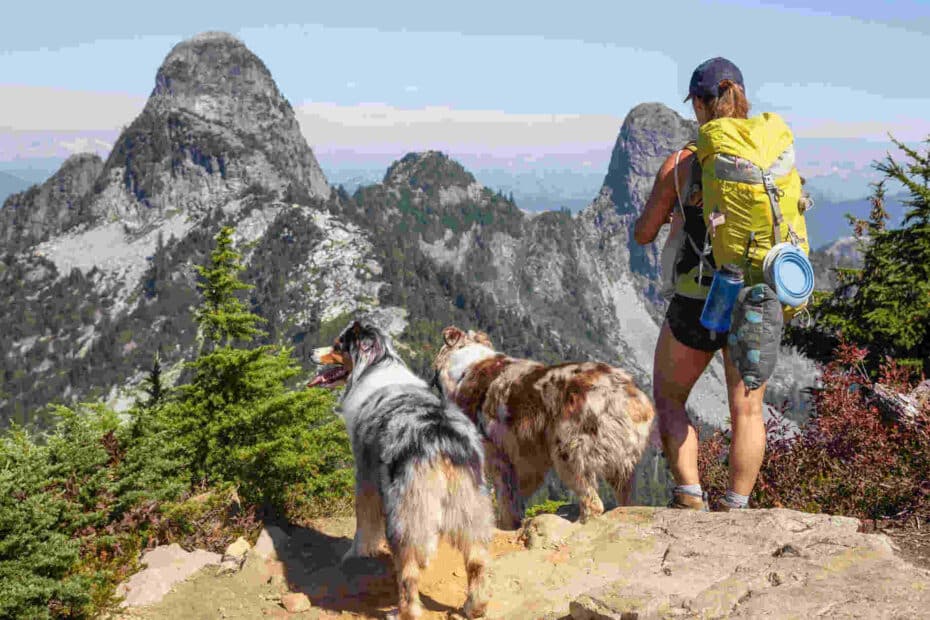Hiking with your big dog? It’s more than just stretching their legs; it’s a real adventure. These large furballs, with their endless energy and might, can be the perfect trail buddies. But it’s not all about the walk. You’ve got to think about their needs to keep them happy and safe.
Why Hiking Rocks for Big Dogs
For your large pooch, hiking is a blast. It keeps them fit, fires up their brain, and cuts down on those annoying habits they pick up out of boredom. Plus, it’s a chance for both of you to bond and create unforgettable memories.
Getting Ready for the Trail
Before hitting the trail, gear up! Think about a comfy harness, water bottles, and paw protectors. It’s also smart to gauge how fit your dog is. Not every big dog is up for a long trek. And pick a trail that suits your dog’s needs, considering the distance and the ground you’ll cover.
Trail Smarts
On the trail, keep your dog leashed to stay safe and respect wildlife. Take plenty of breaks, especially when it’s hot or the path gets tough. Keep an eye on your dog for any signs of tiredness or discomfort.
Safety First for Big Dogs
Large dogs can overheat or get dehydrated quickly, so watch out for heavy panting or lethargy. Know how to handle wildlife encounters and be aware of your dog’s physical limits to avoid injuries.
Picking the Right Spot
Choose trails that are friendly for large dogs, with enough shade and water sources, and where they can walk comfortably.
After the Hike
Post-hike, cool down properly. Check for injuries or ticks, and make sure your dog has plenty of water and a cozy spot to rest. Keep an eye on them for any late signs of discomfort or illness.
FAQs
- Gear up with a sturdy harness, leash, water containers, and maybe booties for rough trails. A first-aid kit is also a good idea.
- Choose trails that are not too tough, with enough shade and water. Steer clear of very rocky or steep paths.
- Overheating signs include too much panting, drooling, and looking worn out. In serious cases, they might even collapse.
- Breaks should be taken every half hour to an hour, depending on the hike’s difficulty and the weather.
- If your dog gets hurt, give them first aid. If it’s minor, slow down and keep going; if it’s serious, head back and see a vet.
- Improve your dog’s fitness by slowly increasing your walk lengths and adding different terrains. Regular exercise and good food are important too.
Conclusion
Hiking with your large dog is not just good for their health; it also strengthens your bond. Proper prep, safety steps, and aftercare make sure you’ll have many enjoyable hikes together.
If you’ve found these tips helpful and want to dive deeper into the world of large-breed dogs, check out our blog series! We’ve got a treasure trove of articles tailored just for your big, adventurous companion. From nutrition advice to training tips, we cover it all. So, don’t wait, explore our blog and make every moment with your big friend even more special!



